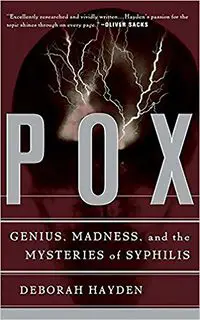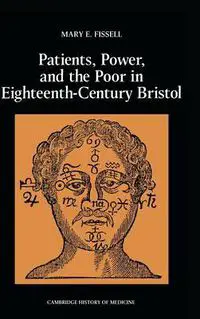Top 10 Books to Read on Western/British Medical History
Just as science, in general, was becoming a source of societal advancement and cultural awe during the Georgian and Victorian periods, so was medical science advancing alongside it. The eighteenth and nineteenth centuries saw the advent of some of the most important medical findings in history. The Industrial Revolution had resulted in a massive change in living conditions -- city centers became crammed with people, while public sanitization procedures struggled to keep up -- this influx resulted in a surge of maladies, most detailed below. The following is a list of books that examine the medical breakthroughs that attempted to solve the medical problems that this new way of living presented.
I’ve arranged this list in order from the most popular, “fun” medical history books, to the more scholarly, academic books.
1. Rebecca Skloot: The Immortal Life of Henrietta Lacks – This book falls a bit out of this list’s timeframe, as it takes place during the mid-twentieth century, but Skloot’s book is, undoubtedly, one of the most important works on medical history and society ever published. It was awarded the National Academies' Best Book of the Year Award, and spent 75 weeks on the New York Times Best Seller list. The book deals primarily with ethical issues in medical research, and illustrates how lines were crossed that should’ve been left alone.
2. Steven Johnson: The Ghost Map: The Story of London’s Most Terrifying Epidemic – This book is a super fun, quick read that examines a particular outbreak of cholera in London in 1854, and a doctor named John Snow who helped put an end to it. Johnson's work explains how theories of contagion evolved from blaming sickness on "bad air" (miasma), to attributing sickness to bacteria that arose from unsanitary conditions. Dr. John Snow's findings changed the nature of epidemiology and medical science, in general, forever -- one cannot overemphasize the importance of this work.
3. Bill Wasik & Monica Murphy: Rabid: A Cultural History of the World’s Most Diabolical Virus – Rabies is still, in modern times, an incurable, deadly disease. If a creature, human or otherwise, is bitten by a rabid animal, that person will most certainly die – and death from rabies remains, even to this day, horrifying to witness. This book examines rabies from a couple of different standpoints -- the actual threat of the disease to public health, and the perception of the disease among individuals.
4. Deborah Hayden: Pox: The Genius, Madness, and the Mysteries of Syphilis – Ah, syphilis, the STD that affected so many popular figures of past centuries – from William Shakespeare to Al Capone. Also know as the “French Pox”, the legacy of syphilis traces back from Christopher Columbus’s voyage to the Americas, to the 40-year Tuskegee syphilis study that began in 1932. The latter is known as one of the most racist, unethical studies ever done in the western world. Hayden argues that syphilis is too often disregarded as an element behind the motivations of important historical figures.
5. Jennifer Lee Carrell: The Speckled Monster: A Historical Tale of Battling Smallpox -- Smallpox is a disease that has been around for approximately 2000 years. Carrell’s study tells the tale of Edward Jenner, the English physician who developed the first version of an inoculation in 1796. Inoculation, which means the introduction of a antigenic substance in an effort to boost immunity to a certain disease, eventually became known as vaccination. Carrell also includes crucial discoveries prior to Jenner’s – including the Lady Mary Wortley Montagu, who contracted the disease and was among the first to have her child inoculated. Due to her high societal standing, the Lady Montagu played a crucial role in spreading the word about the efficacy of inoculation.
4. Ruth Richardson: Death, Dissection, and the Destitute – This book falls a bit outside the “popular medical history” category due to its academic prose, but it is, nonetheless, a highly readable, fascinating work for anyone interested in medical history and the poor. In the 1830s, the field of medicine was burgeoning, and dissectible corpses were perhaps the most crucial teaching mechanism for future doctors. The problem was, most nineteenth-century people were not amenable to having their corpses used for medical purposes. This meant that other means of obtaining fresh bodies must be considered…
7. Nadja Durbach: Bodily Matters: The Anti-Vaccination Movement in England, 1853-1907 – This work explores the science and social history of smallpox. Durbach's work is perhaps one of the most relevant on this list in these modern times when anti-vaccination activists are opposing such important medical discoveries. In England, the Compulsory Vaccination Act made smallpox vaccines mandatory for all children, beginning in 1853 -- such an act was considered by many working-class Englishmen and women as an infringement upon their natural rights, and was met with fierce indignation.
8. W.F. Bynum & Roy Porter: Medical Fringe and Medical Orthodoxy 1750-1850 – During the eighteenth and nineteenth centuries, there was no consensus as to what constituted “accepted” medicine, and what constituted “alternative” medicine – they simply blended together. This work studies this important time when demarcations between scientifically-validated medicine, and holistic/alternative medicine were being made.
9. Mary Fissell: Patients, Power, and the Poor in Eighteenth-Century Bristol – Fissell’s work was one of the first academic medical history studies to deal with medicine and sickness from a societal point of view, rather than from the purview of upper-class physicians and the like. During the time that Fissell deals with, there was no consensus as to which type of medical practitioners were the most effective – this resulted in a medical marketplace full of questionable characters and dubious remedies.
10. Mike Saks: Alternative Medicine in Britain – This book is a collection of essays on the place of “alternative” medicine in Britain, from the nineteenth century to the present day. In Victorian Britain, there was no consensus on what constituted “real” medicine, and what constituted “alternative” medicine. This work deals with such practices as acupuncture, osteopathy, and spiritual healing, and it also focuses on the professionalization of medicine during the nineteenth century.



